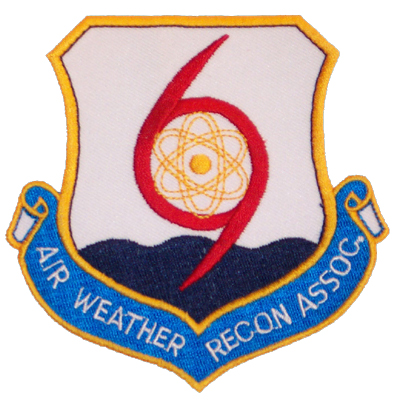 |
512th Reconnaissance Squadron
(Very Long Range) Weather
Photos courtesy of members of
PAWS, Pacific Air Weather Squadrons,
and the Air Force Weather History Office
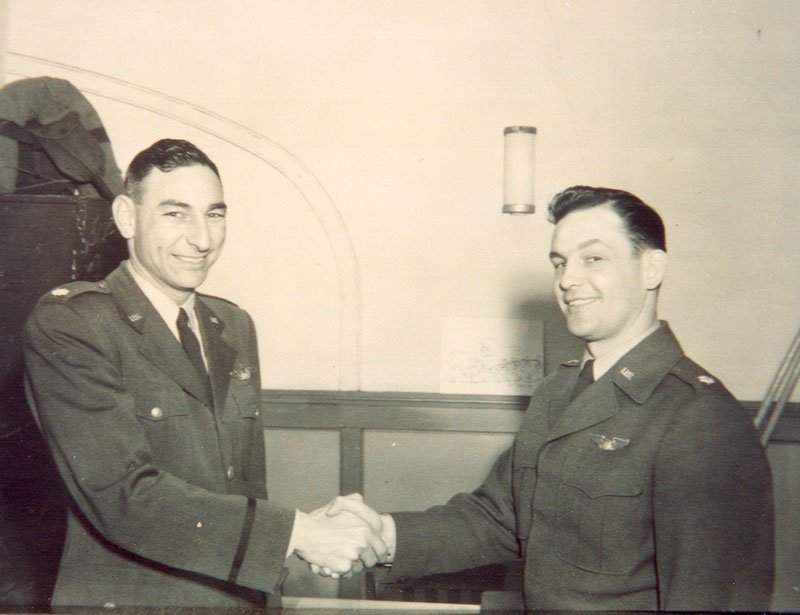 |
| Official USAF Photo |
The only commander of the 512th RS (VLR) Weather was Lt Col Robert G. David shown here (left) congratulating Major Homer A. Baker, the Squadron Adjutant. Colonel David later pinned on his eagles. |
| For
people who are reading about these military units for the first time,
let me digress for a moment. Official unit history and lineage
follow specific lines. Immediately after World War II, weather
reconnaissance units were designated by 50-series numbers (53rd, 54th,
55th, 59th) that derived from wartime heavy bombardment and weather
reconnaissance squadrons. For some reason, currently lost in the
fog of time, when the USAF was formed in 1947, it was decided to
instead honor/continue other historically significant unit
identifiers. The units chosen were the 373rd, 374th, and 375th
replacing the 53rd, 55th and 59th (respectively) and the 514th,
replacing the 54th. The 512th and 513th names were assigned to
Air Weather Service as place holders for future squadrons planned to be
assigned to Japan and Hawaii. These new unit names had their own
history and lineage. When you look them up in official records,
it
appears that they were created from thin air on a specific date, and
later disappear just as quickly. At the squadron level, all that
really happened is a change to unit letterhead. Happily, for
people who are doing research 50+ years later, a set of orders
reassigning the entire unit was generated, giving us a snapshot of all
400+ members
of the squadron on a few specific dates. |
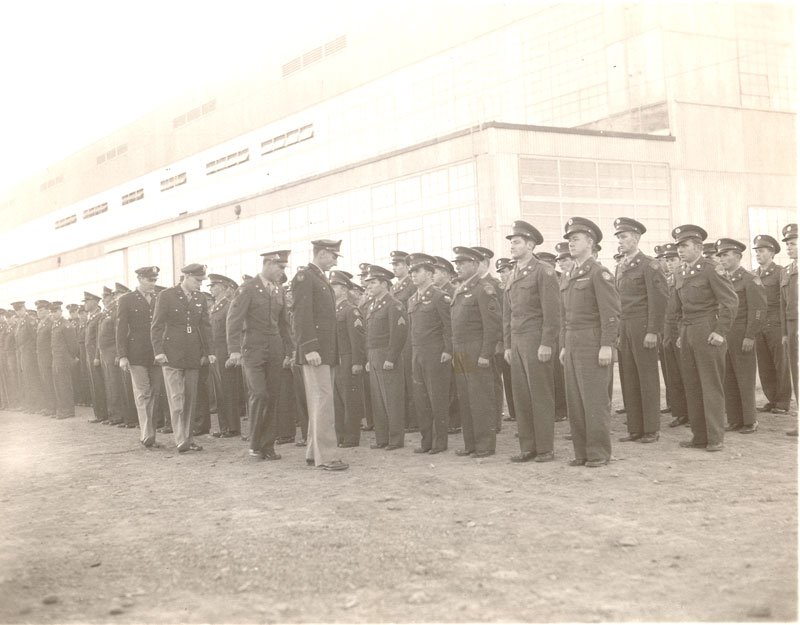 |
| Official USAF Photo |
Lt Col David conducting squadron inspection at Fairfield-Suisun. I sure hope no one got any dust on their shoes walking out that morning... |
| The
512th Reconnaissance Squadron (Very Long Range) Weather was activated
on 13 Feb 1949 at Fairfield-Suisun AFB, CA. Fairfield-Suisun was
later renamed Travis and continues in operation today. In early
1949,
Fairfield-Suisun was the major center of weather reconnaissance.
The 308th Weather Reconnaissance Group was based here and oversaw the
operations of the 374th Reconnaissance
Squadron (VLR), 2078th Weather
Reconnaissance
Squadron (Special), as well as the 512th. There was also a
detachment of the 375th and the 513th was assigned as a paper
squadron, i.e. no personnel were assigned. The 512th RS (VLR) was in training, as a unit, for their future deployment to Japan. The process of having new units train together in the Zone of the Interior (ZI) prior to overseas deployment continued a tradition from WWII. During this training period, the 512th had extensive flight operations, the maintenance folks learned the B-29 inside and out, and a cohesive organization was built. |
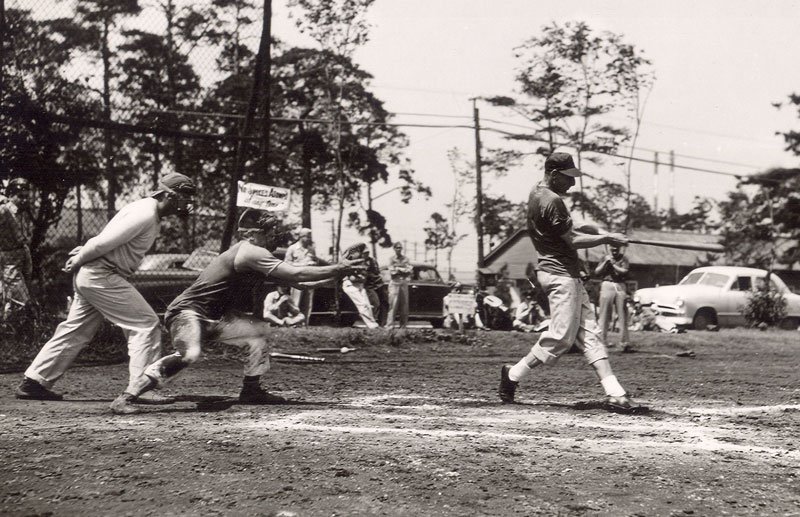 |
|
An important part of building unit cohesion was sports. From Col David's swing you can tell that it was taken seriously. Excuse me Colonel, but doesn't the sign on the fence say "No Spikes Allowed at any Time"? Actually, I think the sign means not to wear your spikes OFF the field ... |
| In
late 1949, major changes occurred at Fairfield-Suisun. SAC took over
control of the base and, in typical SAC fashion, decided that the
weather reconnaissance units should find a new home. As a result,
the 374th moved up the road to McClellan AFB in Sacramento, the 308th
Group, 2078th WRS (Special) and the 513th (still a paper squadron)
headed off to Tinker AFB, OK and the 375th Detachment closed its doors. The 512th completed their training and were certified ready for deployment. The ground echelon headed for the port. There they boarded the US Army Transport General Edwin D. Patrick for the voyage to Japan. The air echelon went to McClellan to await new RB-29s, currently being modified at the Sacramento depot. The aircraft would arrive one-by-one in Japan over the next few months. |
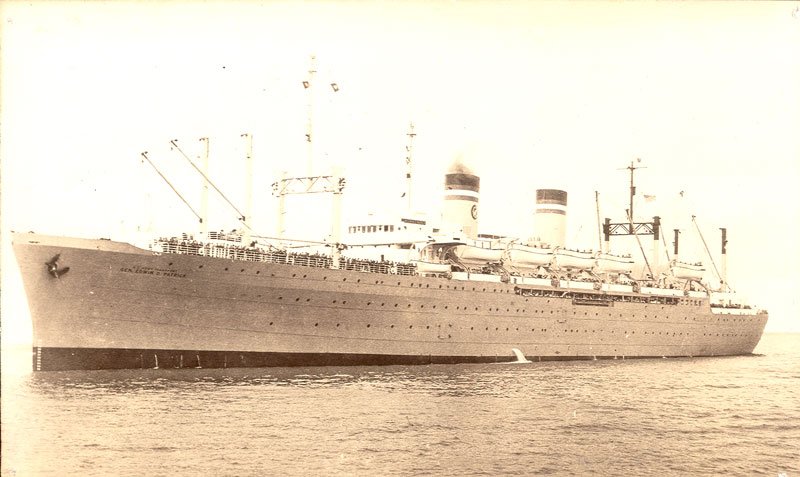 |
US Army Transport General Edwin D. Patrick |
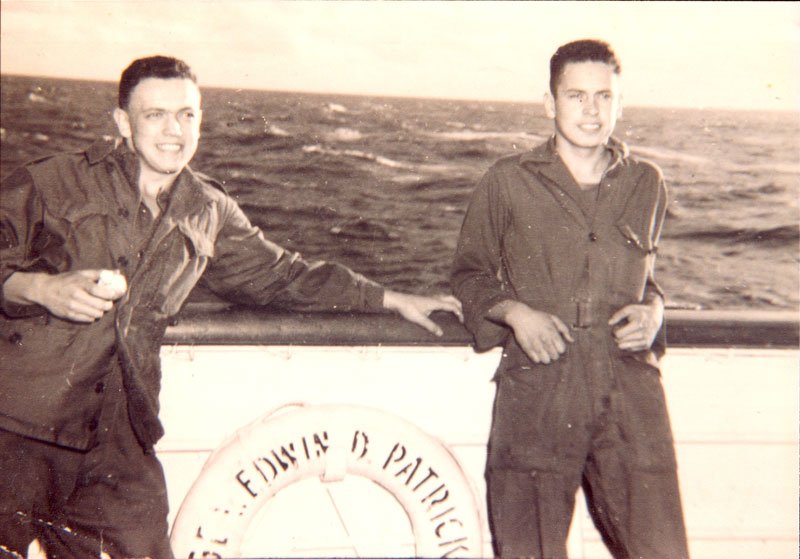 |
Paul Mychack (left) and Airman Lopez of the 512th on board the General Edwin D. Patrick |
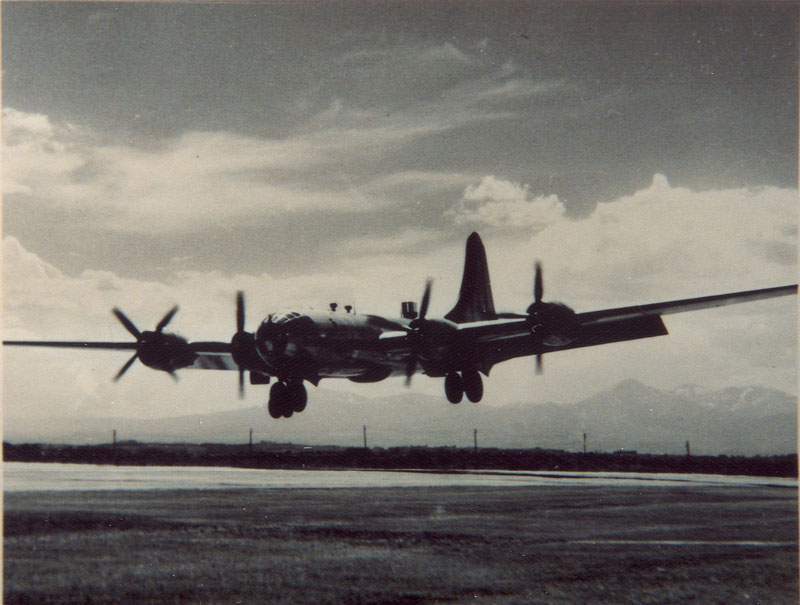 |
RB-29 landing in Japan. These modified war birds had all of the gun turrets removed and skinned over, a full suite of weather instruments added for the weather observer who sat in the nose, and had a special chamber to allow the new dropsondes to be released from the aircraft. The CFC gunner's bubble in the aft pressurized compartment was replaced by an atmospheric sampling foil. The crews nicknamed it the "Bugcatcher". Special, oil treated, filter papers captured particulate matter from the air. These were analyzed after each flight, looking for evidence of Soviet nuclear tests. This aspect of the mission was Top Secret and not publicly acknowledged until many years later. The weather aircraft were redesignated as WB-29 by the Air Force on 30 Aug 1950. |
| Upon
reaching Yokota, the 512th wasted no time getting to
work. Squadron facilities were identified and everyone pitched in
to make them their own. The operations folks finished
coordinating
the new "Buzzard" weather tracks that replaced and augmented the "Loon"
tracks flown from Alaska and the "Vulture" tracks out of Guam. Crews prepared for the upcoming typhoon season and a lot of time was spent coordinating operations with their parent 2143rd Air Weather Wing, also at Yokota. No one knew that history had a surprise heading their way. |
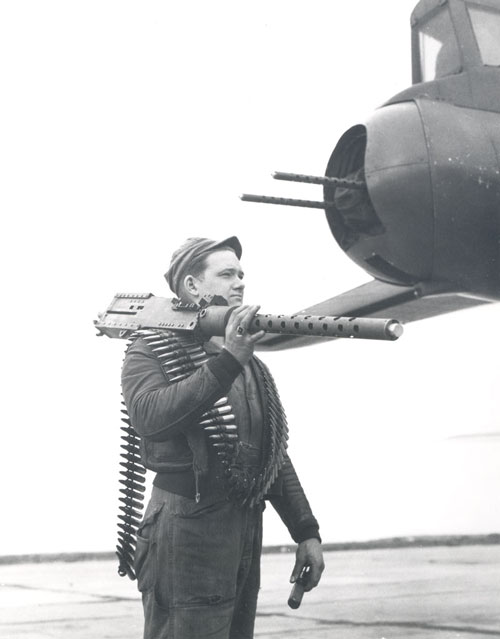 |
| Official USAF Photo Courtesy of the Air Force Weather History Office |
Unidentified armorer replacing tail gun on a WB-29 |
| On
25 Jun 1950, forces from communist North Korea crossed the 38th
Parallel into the South. Within 24 hours, the 512th flew a
weather reconnaissance sortie over Korea. This marks the beginning of a
remarkable streak. According to the Air Weather Service records,
the 512th (and later the 56th SRS) flew weather reconnaissance missions
over the combat zone north of the 38th Parallel every day until 9 Jun
1952, the only Air Force unit to have an aircraft over enemy-held
territory every day since the war began. On 13 Jul 1950, a 512th RB-29, piloted by First Lieutenant Fred R. Spies, led the first B-29 strike mission from Japan against targets in Korea. On board Lt Spies aircraft was Major General Emmett O'Donnell, Jr. During WWII, then Brigadier General "Rosie" O'Donnell had led the first B-29 mission against Tokyo in Nov 1944. In 1950, he was commander of 15th AF at March AFB. When hostilities in Korea broke out, General O'Donnell was sent to Japan to command the newly formed Far East Bomber Command. Lt Spies was later awarded the first oak leaf cluster to his Distinguished Flying Cross for this, and two other, B-29 strike missions. The USAF quickly ramped up to support United Nations operations in Korea. Yokota became an extremely important location to move men and supplies through to the combat zone. The decision was made to relocate the 512th to Misawa AB in the far north of Honshu Island, the main island of Japan. The squadron would remain at Misawa until it was inactivated on 20 Feb 1951. The 56th SRS, the name the squadron assumed on 21 Feb, stayed at Misawa until Sep 1951, when it moved back to Yokota for good. |
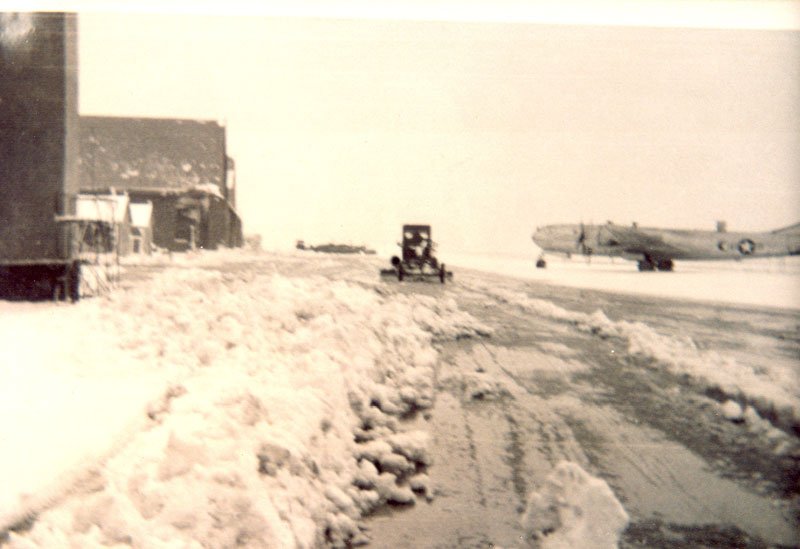 |
Misawa Flightline, winter of 1950 |
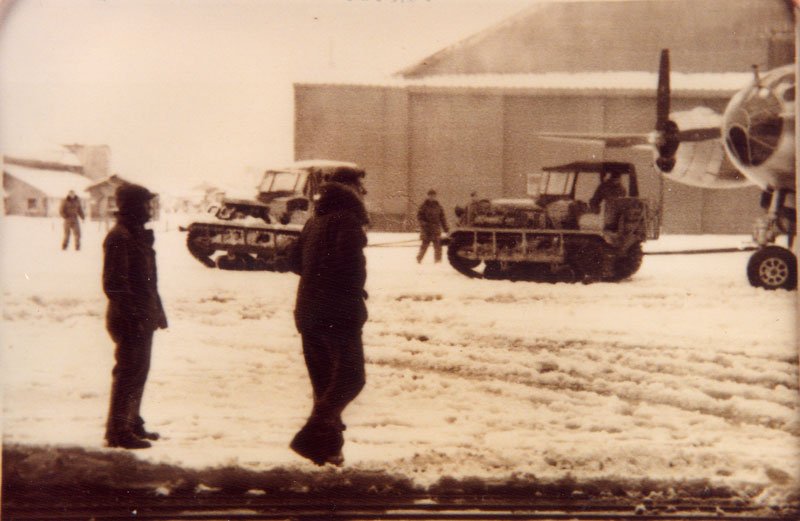 |
The 512th men in the foreground are Emmitt Ray and Gene Leonard. In the background, two CELTRACs tow a WB-29 on the Misawa flight line. |
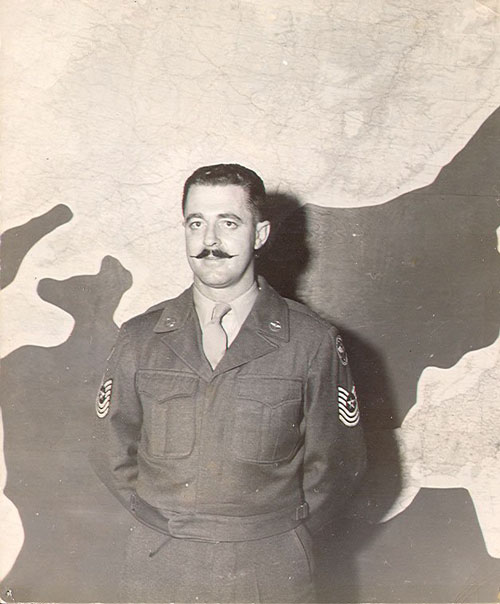 |
MSgt William McCleary The 512th RS (VLR) First Sergeant |
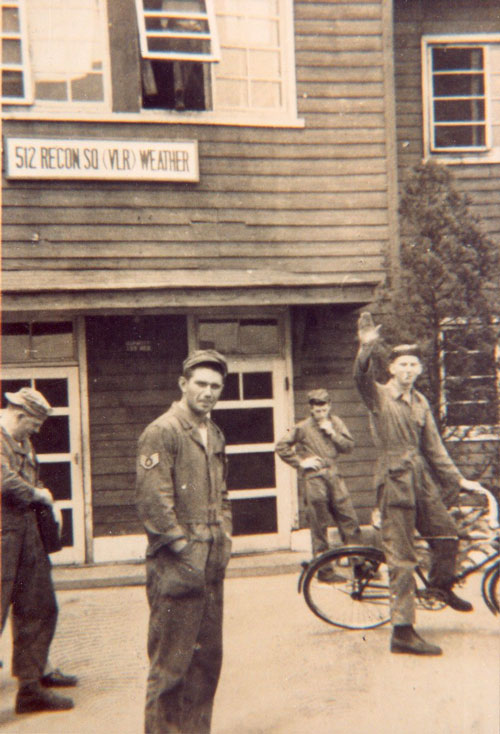 |
The 512th RS (VLR) Wea barracks at Yokota. Pictured, from left, Red Wright, Ferni Kunkel, Wendall Larson and Ray Hintzen |
| So,
why did we decide to honor the 512th this month? Obviously they
had a short, but extremely noteworthy history with weather
reconnaissance, but something else is at work here. The lineage
of the 512th Bombardment Squadron (Heavy) did not end in Feb 1951 when
the weather reconnaissance version was inactivated in favor of the 56th
SRS. In fact, the storied history of the 512th continues today as
the 512th Rescue Squadron at Kirtland AFB, NM. Recently, a member
of the current 512th RQS contacted AWRA to see if we had any
information or pictures that we could share. The photos above are
some of the pictures from PAWS that the late Russ Conant accumulated,
and that we sent to the 512th RQS for their history wall. To see the official fact sheet about the 512th RQS, follow the link below: |
GO TO TOP OF PAGE
GO TO AWRA HOME PAGE